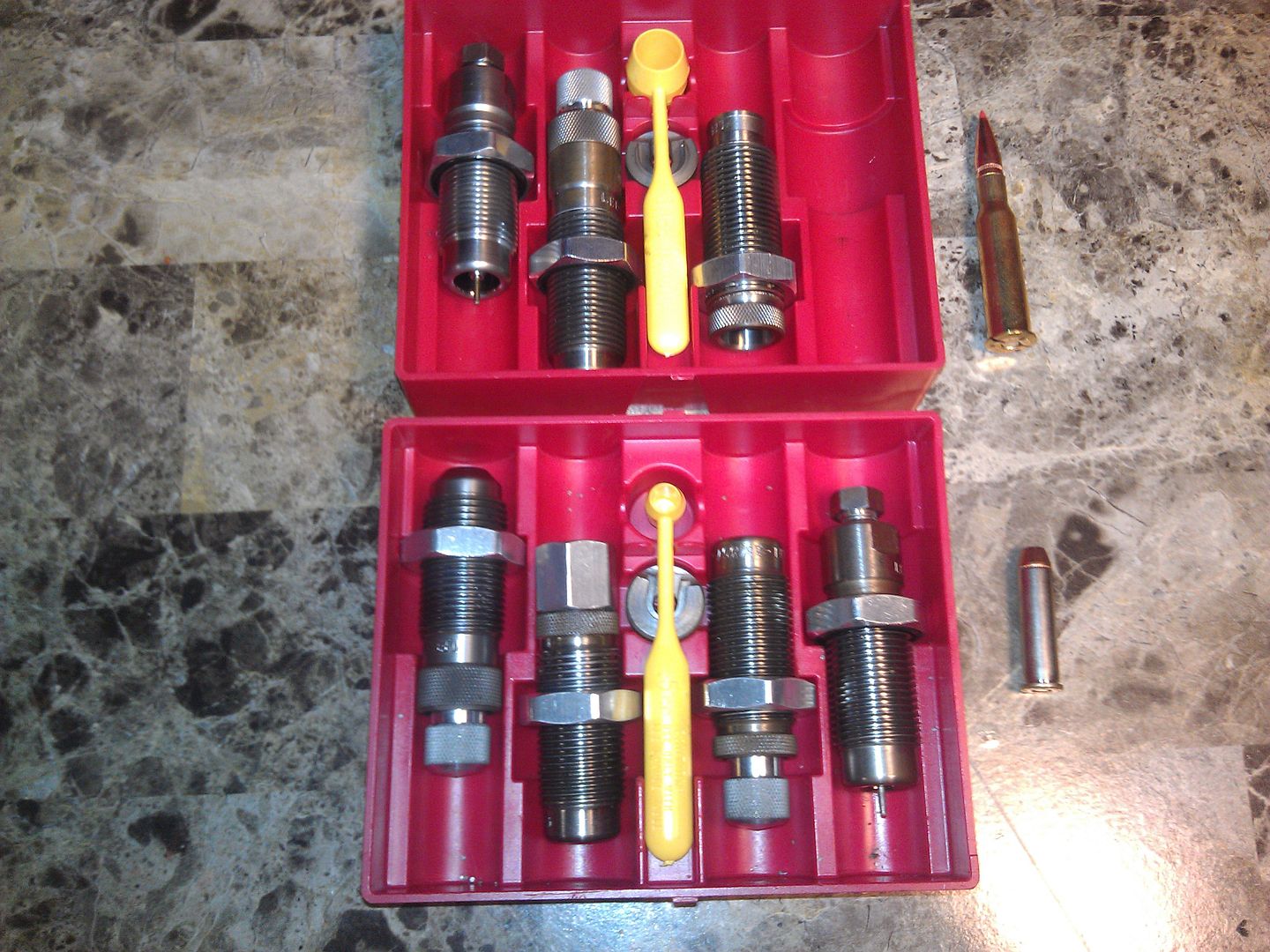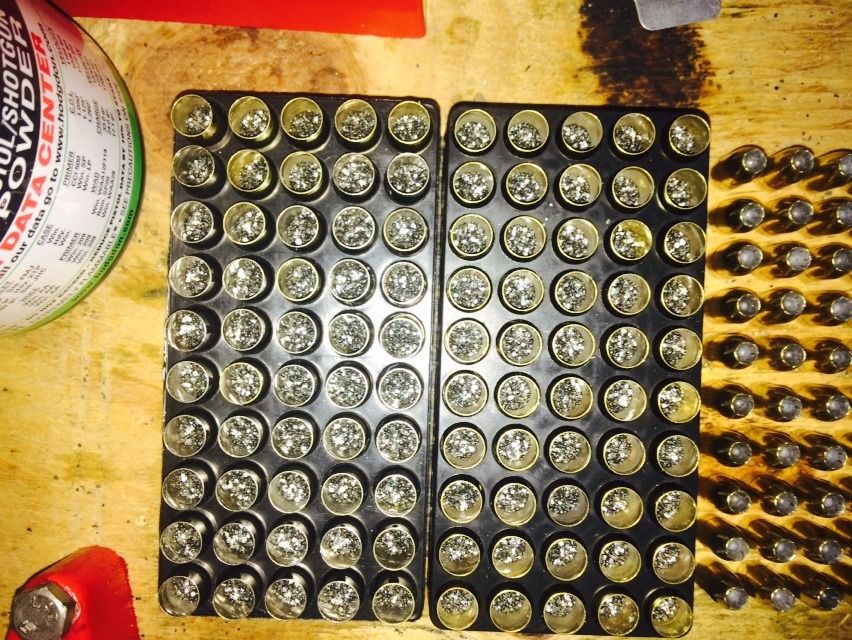Kbrun, I understand why this seems confusing to you, this is because you are doing rifle only which doesn't save time to batch. You'll understand when you start loading pistol and see what the second step is. Rifle dies: full length die, bullet seating die, possibly a FCD. Pistol: resizing die, expander/powder die, seating/crimp die, possibly an FCD. It's that second die that makes batch powder charging a much faster process, rifle does not usually have this process on a single stage.
Yes, the powder thru is not 100% nessecary, you could charge by hand but your slowing yourself down for no reason. You can still see very easily that your charged before seating, I think it would be easier to accidentally grab an empty case rather than being able to visually confirm that all cases are charged at one time and moving any empties away from the bench making only the possibility of a charged case getting a bullet.
I cannot tell from your posts if you understand this or not.

See if this pic helps. All empties put away, leaving this as the only available brass to seat a bullet on. I think it would be much easier to forget to charge a case before seating if done during the seating process and possibly getting distracted. This leaves almost an impossibility of a squib seeing all the charged cases at once. Again, for pistol only since most bottlenecks are difficult to see inside.

Yes, the powder thru is not 100% nessecary, you could charge by hand but your slowing yourself down for no reason. You can still see very easily that your charged before seating, I think it would be easier to accidentally grab an empty case rather than being able to visually confirm that all cases are charged at one time and moving any empties away from the bench making only the possibility of a charged case getting a bullet.
I cannot tell from your posts if you understand this or not.

See if this pic helps. All empties put away, leaving this as the only available brass to seat a bullet on. I think it would be much easier to forget to charge a case before seating if done during the seating process and possibly getting distracted. This leaves almost an impossibility of a squib seeing all the charged cases at once. Again, for pistol only since most bottlenecks are difficult to see inside.

Last edited:
